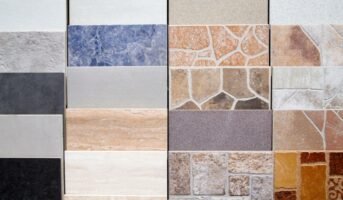
Source: Pinterest
An elevated house design is supported by columns or another structure and has a first floor raised above the ground level and exposed underneath. This is generally done in floodplains to raise the home above the flood zone, allowing water to flow beneath the structure and out the other side. In other cases, elevated houses are constructed to fit sloping or uneven terrain and provide the finest possible view of the surrounding natural environment.
How does the elevation process work?

Source: Pinterest
As part of the elevation process, most homes are removed from their foundations and hoisted on hydraulic jacks while a new or enlarged foundation is built below the ground’s surface. The living space has been elevated, and only the foundation is still vulnerable to water. This procedure is particularly effective for homes originally constructed on the basement, crawlspace, or open foundations. When houses are raised using this approach, the new or expanded foundation can be made up of either uninterrupted walls or separate pillars or columns. Masonry buildings are more challenging to raise than other types of houses, mostly the overall design, build, and heaviness of the structure. However, it is doable.
See also: Normal house front design, exterior elevation design ideas
5 Advantages of elevated house design

Source: Pinterest
Elevated house designs are advantageous for various reasons, not the least of which is that they reduce flood danger. Flooding has become a real concern for many households in recent years due to global warming. So, here are 5 reasons why an elevated home is a good investment.
1. Priceless view of the surroundings
It is common for elevated house designs to be chosen because of their capacity to give superior scenic vistas. A house built on stilts typically provides views over adjacent tree lines, which is particularly desired on lakeside, seaside, or hillside homes, and on other types of properties.
2. Improved ventilation
Particularly beneficial in hot and humid areas, the additional height of the building because of elevated house design serves as a natural mechanism for improving airflow below and around the building itself. This aids in the regulation of indoor temperatures and the reduction of the chance of mould and mildew formation.
3. Better stability
Although it may seem counter-intuitive, elevated house design can improve the structural integrity of a home’s foundation. Using stilts to support a residence when the ground underneath it is unstable, such as on a steeply inclined region or a sandy beach, may help to provide the solid foundation required to support a home adequately.
4. Home improvement made simple
With a raised floor, the installation, maintenance and adjustment of utilities such as water, sewage and electricity lines are more straightforward. Modifying plumbing fixtures is a simple process. Rerouting of telephone, television and internet wire is a reasonably simple and inexpensive procedure that takes little time and effort.
5. Reduced risk of flood and added safety
The possibility of flooding has become a concern for people around the world. A raised floor system can answer your problem of elevating your home’s foundation to or above the base flood level. Given the available alternatives, a raised floor can be the most feasible and cost-effective method of protecting your home and complying with construction codes in flood-prone locations. Furthermore, there are no windows on the base floor which acts as a first floor, making it more difficult for visitors to see inside and/or break into the house from the outside.
Is it possible to raise an existing house?
It is possible to raise an existing home, but this is a time-consuming and expensive operation. The home must first be stabilised and jacked before columns can be put under the structure to support the additional elevation.

With 16+ years of experience in various sectors, of which more than ten years in real estate, Anuradha Ramamirtham excels in tracking property trends and simplifying housing-related topics such as Rera, housing lottery, etc. Her diverse background includes roles at Times Property, Tech Target India, Indiantelevision.com and ITNation. Anuradha holds a PG Diploma degree in Journalism from KC College and has done BSc (IT) from SIES. In her leisure time, she enjoys singing and travelling.
Email: [email protected]












